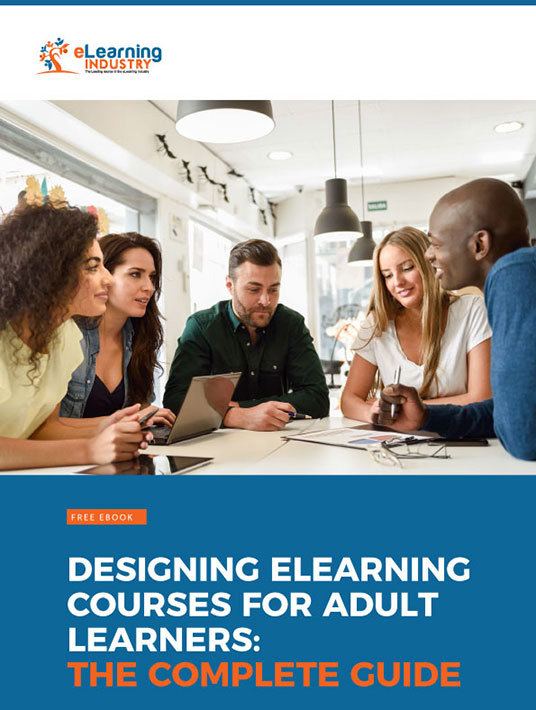Cognitive Limitations Of Adult Learners: 6 Factors And 6 Obstacles
Every human mind has a finite capacity for processing and storing data. There are times when our short-term memory can simply run out of space, forcing our minds to virtually shut down and stop absorbing new ideas and concepts. This can happen to even most brilliant among us, especially when there is a constant influx of information. It's important for eLearning professionals to know the 6 factors that play a pivotal role in shaping these cognitive limits, so that you can minimize cognitive overload for your online learners.
6 Factors That Determine The Cognitive Limitations Of Adult Learners In eLearning
1. Amount Of Information
According to Miller's theory regarding "The Magical Number Seven, Plus or Minus Two" [2], most adult learners are able to store between 5 and 9 items of information at once in their short-term memory. Once we exceed this limit we run the risk of overloading our mental pathways and we cannot absorb any new information. This is why it's essential to break longer eLearning courses down into more manageable online modules or lessons, and avoid using lengthy text blocks and opt for bullet points, sub headers, and images that tie into the subject matter. The goal is to not bombard them with so much information that their brains become burdened, because that only leads to frustration and a lack of results.
2. Exposure To Information
In addition to the amount of information we are given, our minds are also affected by how we are exposed to the information. In particular, the time we have to absorb the key concepts. We must review, recap, and repeat information on a regular basis in order to remember it. Try to space eLearning activities so that online learners have time to absorb and retain the information, but also keep the forgetting curve in mind. Hermann Ebbinghaus introduced the curve, which stipulates that memory retention is a function of the relative strength of memory over time [1]. Studies on the forgetting curve and knowledge retention rates have shown that we tend to forget about 90 percent of what we learn within the first month. This means that we must review and actively recall the information before that time limit, or else we tend to forget it completely.
3. Attention Span
The human attention span tends to grow as we get older. However, even adult learners have their limits. Distractions, busy schedules, and a variety of other factors can have a direct impact on our attention spans. Even the instructional design of the eLearning course itself can factor into the equation. For example, an eLearning course that features a variety of chaotic images, cluttered pages, and a disorganized layout can distract your online learners. This will prevent them from effectively assimilating the information. For this very reason, you should keep your eLearning content organized and clutter-free. Don't fear white space and make sure that every image ties into the subject matter.
4. Tapping Into The Long-Term Memory
There are times when we are simply unable to access our long-term memory banks. The new concepts or ideas we are learning simply remain in our working memory, which prevents us from calling upon it when we truly need it. There are a variety of things that can cause this, from lack of sleep to mental conditions that hinder our cognitive processes. No matter how long or hard we try to tap into the information, we are unable to reach it. This is one of the trickiest cognitive limitations of adult learners to address. However, you can help to prevent it by using real-world examples and stories to link new concepts to preexisting knowledge.
6. Age
This particular cognitive limitation is a double-edged sword, as both younger and more mature adult learners are impacted by their age. Let's take a closer look at how this can affect two generations who cover both ends of the age spectrum:
-
- Millennials
While younger adult learners may have the ability to retain more information and process it more rapidly, in most cases, they also tend to have a smaller knowledge base. This means that Millennials must work harder to enrich their knowledge base first in order to be able to tie new information to preexisting ideas and concepts. This may take some time, as it involves two steps in the process of making the connection, primarily because they have to form entirely new mental schemas. - Baby Boomers
As the human memory tends to degrade as we grow older, more mature adult learners are less able to absorb and retain information as effectively as younger generations. Information, therefore, cannot be transferred from the working memory to the long-term memory as rapidly. However, Baby Boomers do have experience and preexisting knowledge on their side. They already have an abundance of mental schemas and neural pathways to build upon, which enables them to connect new ideas to information they have already assimilated.
- Millennials
6. Emotional Factors
Stress, anxiety, and a variety of other emotions can have a significant impact on the limitations of adult learners. Positive emotions can help us to absorb knowledge more effectively, while negative ones can have the exact opposite effect. This is why it's important to create a supportive and optimistic eLearning environment for your online learners. Use colors that soothe their minds and images that evoke positive emotions. Learn as much as possible about their interests and try to integrate them into the overall design of your eLearning course. The objective is to take away any negative emotions that can prevent them from fully engaging in the eLearning process.
Unfortunately, this is just the tip of the cognitive limitations iceberg. Therefore, it's important to conduct in depth eLearning audience research to figure out which mental obstacles adult learners are facing, so that you can increase knowledge retention and reduce cognitive overwhelm.
6 Obstacles To Overcome When Creating eLearning For Adult Learners
We haven't yet discovered how to read minds, so we don't know what adult learners are thinking. They are often too mired in doubt to express their problems. We can't fix what we're not aware of. A major step in making eLearning courses for adult learners accessible is to identify and resolve adult learning obstacles. Now that we've explored the 6 factors eLearning developers should consider, let's look at 6 obstacles to overcome when creating eLearning for adult learners.

1. The Online Instructor Is In Charge
The conventional idea of school is that an instructor guides the process as an authoritarian figure. Adults see their teachers as peers and they may have a hard time taking orders from an equal. Therefore, self-guided eLearning courses are often the ideal approach. The adult learner needs room to make decisions. Interactive, autonomous approaches are far more effective than pedantic education.
2. Physical Limitations
As adults get older, their bodies may not be as cooperative as they were in the past. Ensure that font sizes and types are legible. Adults have also spent a large amount of time using the Internet for leisure. In addition, many people may have a hard time focusing on long prose. For this reason, eLearning courses need to use short bursts of text and plenty of diagrams. This ensures that adult learners absorb the relevant knowledge before their attention span gets compromised.
3. Knowledge Retention
The older we get, the harder it is to remember things. This can be especially problematic when it comes to adult learning and it constitutes one of the biggest adult learning obstacles. Adults have no interest in reciting facts. They often lack the capacity to remember infinite details. This is why they learn best through demonstrations and a hands-on approach. The issue of memory can be resolved with some careful structuring of the eLearning course. Develop eLearning courses that have self-monitoring units. Adult learners can proceed at their own pace and review past eLearning modules with ease. The learning materials should be presented in simple, memorable packages. These include brief audio clips, mnemonic systems, flow charts, Venn diagrams, photographic examples and so on.
4. Teaching Tasks Instead Of Subjects
Younger learners assimilate information on a broad scale. Adult learners, on the other hand, aren't really interested in overviews. When an adult takes a particular eLearning course, they want to acquire a specific skill set and complete a particular task. An adult would be more interested in specifics. "How do I raise capital? How to do I seal a deal? What are some good negotiation skills? What business should I start?" eLearning courses for adult learners need to be more niche-oriented in order to hold their focus.
5. Perception Of Ongoing Training
Some adults have a hard time resuming training. They have an in-built attitude that challenges their desire to learn. The advantage of eLearning courses is that they are very discreet. Adult learners can study in the privacy of their own homes or offices. They can also work at their own pace. They don't have to worry about competing with their online classmates.
6. Tech Know-How
Adult learners weren't raised with mobile devices, as is the case for younger generations. As such, they may not be as tech-savvy as their Gen-Y peers. That said, many adult learners realize the importance of tech tools. For example, how mobile devices can help them solve everyday challenges and provide moment-of-need knowledge. Adult learners who are resistant to change may need some extra encouragement, such as online training tutorials and guides that show them how to access and utilize the Learning Management System. Give them all the online training resources they need to make the most of your tech tools so that they feel comfortable and reassured. In addition, research your audience to identify problem areas and create personalized walkthroughs and demos.
Conclusion
Adult learning comes with a unique set of obstacles. In many ways, the older we get, the harder it is to learn. We are challenged by simple things like reading small lettering or remembering facts and figures. We are less theoretical and more task-oriented in our approach to life and ongoing training. Sometimes, we even feel too "old" to engage in eLearning courses. Each of these adult learning obstacles has a workable solution. With time and patience, we can find a way around them. We just have to give ourselves a chance.
Would you like to learn more about creating eLearning courses geared toward adult learners? Download our free eBook Designing eLearning Courses For Adult Learners: The Complete Guide to learn about the characteristics of adult learners, what motivates them, the most appropriate Instructional Design models and Theories for adult learners, as well as additional facts and stats you need to know about this particular audience.
Employees are busy, stressed, and often distracted. Read the article 7 Success Factors To Win The Bet With Overwhelmed Corporate Learners and keep these success factors in mind when you're developing your next online training program.
References
- Forgetting curve
- Miller, G. (1956). The magical number seven, plus or minus two: Some limits on our capacity for processing information. The psychological review, 63, 81-97.







